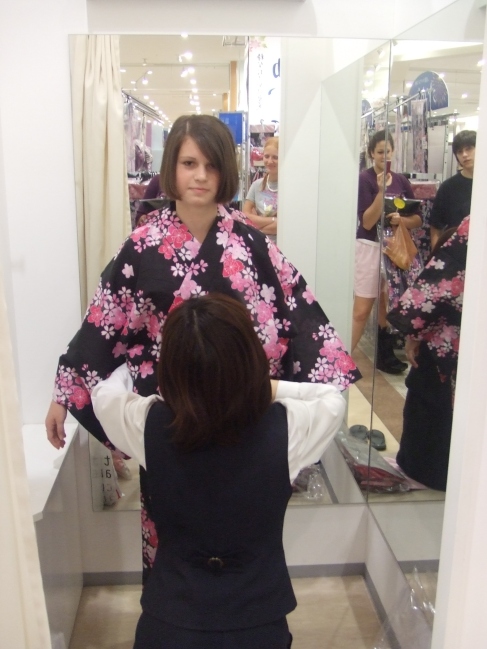The whole idea is perfection. That’s why we need so much training. We can’t charge guests to look at imperfection. It has to be perfect.
Geisha are traditional Japanese female entertainers who act as hostesses and whose skills include performing various Japanese arts such as classical music, dance and games. However, when I traveled to Japan as a Student Ambassador, the lifestyle associated with being a Geisha didn’t have such a positive connotation. It was apparent to me that some people are under the impression that a Geisha will perform sexual acts for money: prostitution. Many people assume these types of acts are taking place because of the nature of being a Geisha. These women will be “taken on” by wealthy men who could afford the hefty fees of the Geisha lifestyle and training. These types of relationships can be very easily misunderstood, which often results in the spreading of ideas such as associating a Geisha with being a prostitute. This idea might also have its roots in an act referred to as mizuage, where a man would pay to have sex with a Geisha in training to signify her transition out of training. It has also been referred to as a “ceremonial deflowering,” which, in my opinion, offers up a rather provocative connotation that can, most definitely, be interpreted negatively due to varying cultural norms.
While the details of the Geisha lifestyle are difficult to interpret, people around the world will continue to be intrigued by their very distinct style of dress. My friends and I, being the obvious tourists that we were, decided to get fitted in and purchase our own kimonos. A Geisha in training will have a much more colorful kimono than a full Geisha. Another important part of the kimono are the very long, pocketed sleeves. They can often get in the way while a Geisha is attempting to hostess or entertain. We were showed how to wrap the sleeves around our arms so that we would actually be able to use them. The color and style of the kimono will vary based on the type of event and the calendar season itself, and it can take years to complete a kimono since a lot of detail goes into painting and embroidering them. There are now laws that have set a minimum age for apprenticeship to 18. Back in the day, girls as young as 11 would become official apprentices, even though informal training may have begun when they were as young as 4 years old. This puts more pressure on training to ensure a Geisha’s perfect presentation and on kimono makers to have the dresses completed after only about 3 years of training compared to nearly 10 in the past. It used to be that a Geisha could wear her hair down. However, a return to more traditional rules dictated that the shimada hairstyle, an up-do, be the norm. a Geisha’s hair is never touched once it has been done. They even sleep in neck supports instead of of pillows to ensure their hair is maintained. It is also worth noting, that while the traditional white-faced makeup is probably the most recognizable characteristic of a Geisha, it is only applied for special occasions.

